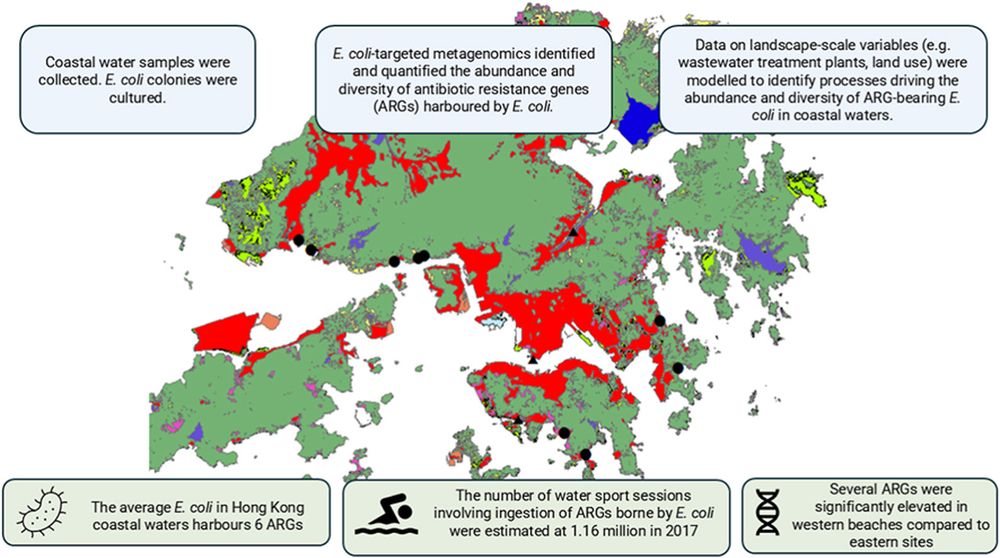
Focusing on Evolution, Ecology and Environmental dimensions of AMR & plasmids
Formerly @ DTU & UoExeter
He/him
Thanks to the organizers for inviting me to give a talk on how we can infer pathogenicity and #AMR in environmental microbial communities based on their taxonomic makeup.


3/3

3/3
2/3

2/3
6/8

6/8
5/8

5/8
4/8

4/8
3/8

3/8
2/3

2/3
Example: To protect against selection for 95% of resistances, you’d use ~1/250 of MIClowest (25x lower than before).
7/9

Example: To protect against selection for 95% of resistances, you’d use ~1/250 of MIClowest (25x lower than before).
7/9
6/9

6/9
26 strain–antibiotic pairs
13 antibiotics, 3 model bacteria, plasmid & chromosomal resistance
➡ 66% of predicted MSCs were within a factor of 2 of experimental values!
5/9

26 strain–antibiotic pairs
13 antibiotics, 3 model bacteria, plasmid & chromosomal resistance
➡ 66% of predicted MSCs were within a factor of 2 of experimental values!
5/9
We link the minimum selective concentration (MSC) directly to the fitness cost of resistance.
For most high-level resistances (f=MICres/MICsus > 20),
MSC ≈ MIC × cost of resistance
✅ Simple
✅ Based on real evolutionary biology
4/9

We link the minimum selective concentration (MSC) directly to the fitness cost of resistance.
For most high-level resistances (f=MICres/MICsus > 20),
MSC ≈ MIC × cost of resistance
✅ Simple
✅ Based on real evolutionary biology
4/9
🚨NEW COLLECTION LAUNCH🚨
I'm editing a new collection in npj Antimicrobials & Resistance:
"Ecological and Evolutionary Drivers of Environmental AMR"
Calling for submissions on environmental HGT, selection, invasion, mutation & more
Open till Apr 26
www.nature.com/collections/...

🚨NEW COLLECTION LAUNCH🚨
I'm editing a new collection in npj Antimicrobials & Resistance:
"Ecological and Evolutionary Drivers of Environmental AMR"
Calling for submissions on environmental HGT, selection, invasion, mutation & more
Open till Apr 26
www.nature.com/collections/...
International One Health Symposium 2025
Date: October 13th - 15th, 2025 in Berlin Germany.
Organized by the German @onehealthplatform.bsky.social
Registration and Abstract submission are open.
evis.events/event/571/

International One Health Symposium 2025
Date: October 13th - 15th, 2025 in Berlin Germany.
Organized by the German @onehealthplatform.bsky.social
Registration and Abstract submission are open.
evis.events/event/571/
by A. Leonard et al. (@uniofexeteresi.bsky.social; @ecehh.bsky.social) in EnvPol
doi.org/10.1016/j.en...

by A. Leonard et al. (@uniofexeteresi.bsky.social; @ecehh.bsky.social) in EnvPol
doi.org/10.1016/j.en...
8/9

8/9
7/9


7/9
6/9

6/9
5/9

5/9
4/9

4/9
3/9

3/9
2/9

2/9
Thanks to the organisers for the invite and the fancy conference gala dinner in Nancy City Hall.
#AMR


Thanks to the organisers for the invite and the fancy conference gala dinner in Nancy City Hall.
#AMR
Looking forward to a few days of science, discussions and fun.
#T4SS2025

Looking forward to a few days of science, discussions and fun.
#T4SS2025



